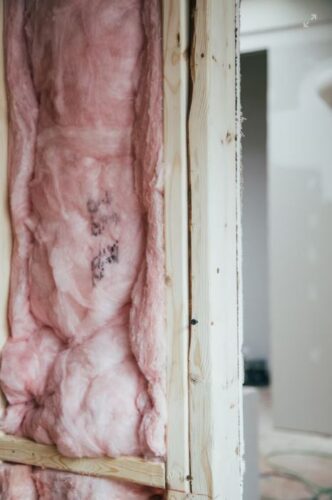Now if you’re thinking this is asbestos you can fry up in a pan with your bacon, you’d be mistaken! Friable asbestos imposes the same risks as any form of the substance. However, it’s known as the most dangerous form of asbestos – and not without reason.
Friable asbestos in basic terms is a measurement of how likely an asbestos containing material will give off airborne fibres when disturbed. Potential high friable materials, which commonly include spray coated insulation and lagging, can cause detrimental damage to a person’s health when disturbed. As such, it’s vital that they are monitored and taken care of in the appropriate manner.
As individual asbestos fibres cannot be seen with the naked eye, if you believe asbestos has been disturbed, it is vital all employees should disperse from the area immediately. If inhaled, the microscopic asbestos fibres will cause scarring to the lungs that can develop into long term health issues, including incurable diseases such as asbestosis and mesothelioma.
Construction workers are particularly vulnerable to asbestos, as it can be present on almost any property that was built before the year 2000. Homeowners are also placed in the same dangerous situation, as the disturbance of building materials containing asbestos can be released into the surrounding air, and there is no requirement to inform house buyers about the presence of asbestos. According to multiple recent UK statistics, there has been over 5000 reported asbestos fatalities this year alone.
Where could friable asbestos be found on a property?
Asbestos was utilised in a number of ways before its complete ban in 1999. Keeping our focus on building materials, these are the most common friable materials in the UK:
- Loft insulation.
- Decayed or damaged asbestos insulating board (AIB) ceiling tiles and wall linings.
- Thermal insulation around pipes or boilers.
- Worn-down flooring materials such as old linoleum.
Emergency steps to take if you suspect asbestos has been disturbed on your premises
- Do not try and clean up the disturbed asbestos.
- Leave the area immediately.
- Get everyone out of the suspected area to reduce exposure.
- Place some form of signage to signal the dangers to outsiders.
- Contact an Asbestos Consultant / Surveyor
- Let SAMS know, and we will give you advice on what to do next!
Things NOT to do:
- Do not re-enter the suspected dangerous area, as any exposure can be health threatening.
- No sweeping the area or brushing the disturbed asbestos, as disturbing the fibres further will cause more contamination and can be detrimental to your health.
- Do not hoover the area. Hoovering is just as bad as sweeping and will cause more of a disturbance and contaminate the air further.
Contact us
If you are unsure about what to do if you have found asbestos, then call SAMS and we will connect you with one of our health and safety advisors, who can advise on the best way to proceed.
Alternatively, get in touch using our live chat box in the bottom right of the page – we aim to respond to all queries within one hour. To learn more about asbestos safety and how to identify asbestos, also consider our UKATA Asbestos Awareness online course.

